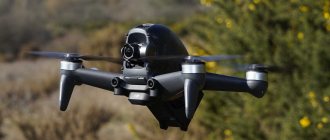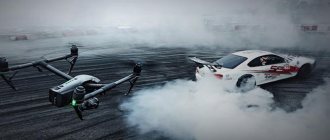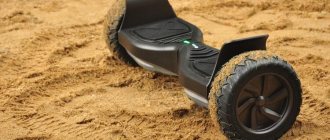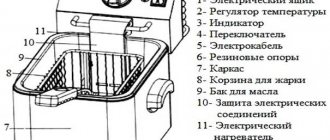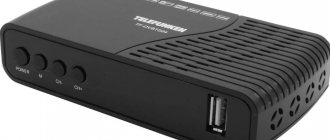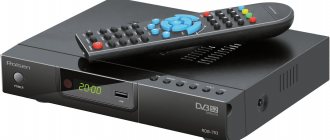Introduction
We think the presented rating will be especially popular not only among young pilots. To a greater extent, it will be of interest to modern parents who are always aware of new trends and want their children to keep up with the times. As you have already seen, the modern world of drones is extremely large and in order to understand this variety of unmanned products, you need to spend a lot of time, which adults, as always, do not have enough.
We have collected here the most popular quadcopters that can be recommended as a first drone for children aged 8–14 years. The TOP 10 includes two types of drones: Nano and Mini, the main task of which is to teach how to operate a drone correctly and safely. The offered products can also be used by children under eight years of age, but only under the strict supervision of adults. In order for a quadcopter to be included in this top, it had to meet such parameters as: safety, workmanship, flight performance, durability, functionality, popularity. Let's start with the last one - 10th place. For those who do not have time to fully familiarize themselves with the rating, we have prepared the table below.
Dear parents, as well as all-knowing young pilots!
Before reading the rating, we simply must remind you that no matter what size the drone is, in careless and inept hands it can be equally dangerous for both the user and others. To get a positive experience from owning a device, you will first need discipline, which is equally present in any responsible task. Remember! Safety first! By following simple rules for launching a UAV, you can avoid many troubles. Parents are strongly encouraged to read the rules and familiarize their children with them!
comparison table
| Name | Availability of camera | Flight time | FPV | Height/Position Hold | Headless mode | Flight environment | Price | Review |
| Eachine E010/JJRC H36 | No | 5 minutes | No | No | Yes | room/street | from 23$ | There is |
| Dwi Dowellin D7 | 2MP | 5 minutes | 2.4GHz Wi-Fi | barometer | Yes | room/street | from 40$ | There is |
| Eachine E013 Small Pepper | 1000TVL | 5 minutes | 5.8GHz analog | No | Yes | room/street | 36$ | There is |
| Parrot Mambo FPV | HD | 10 min | WiFi | Ultrasound + optical sensors | No | room/street | 179.99$ | There is |
| Hubsan H111D | HD | 6 min | 5.8GHz analog | No | Yes | room/street | 98$ | There is |
| Hubsan X4 H107D | HD | 5 minutes | 5.8GHz analog | barometer | Yes | room/street | from 80$ | There is |
| Xiaomi MiTu | 2MP | 10 min | 5GHz Wi-Fi | GPS + sensors | No | room/street | from 60$ | There is |
| Tello Drone | 5MP | 13 min | 2.4GHz Wi-Fi | Ultrasound + optical sensors | No | room/street | from 99$ | There is |
| Blade Inductrix FPV | 600TVL | 4 min | 5.8GHz analog | No | No | room/street | 199$ | There is |
| Hubsan X4 H502S | HD | 12 min | 5.8GHz analog | GPS | Yes | Street | from 120$ | There is |
If you think that our rating is missing some model, then tell us about it in the comments below and we will definitely consider it.
What types of quadcopters are there?
You have no idea how different they are. At one pole are devices costing over a million rubles. These are large and heavy drones with multiple cameras. They are used for cartography and other uninteresting but quite profitable types of business activity. You understand, buying such a device just to play is an almost incredible case.
It is more realistic, if you “fear as much as you want,” to purchase a device for 100-150 thousand rubles. For example, DJI Phantom 4 or Mavic 2 Pro. Such devices are equipped with high-quality cameras with 20-megapixel matrices and have sensors on the sides, top/bottom and front/back that prevent accidental collisions with obstacles.
A lot of preset flight programs, returning to the take-off point with one button, hovering in a geostationary position in space, automatically following an object, circling and other functions make such quadcopters an excellent tool for hobby or professional activities. Especially when you consider that these small, almost toy-sized drones are capable of climbing to a height of up to 5 kilometers and flying at speeds of up to 70 kilometers per hour. True, buying such a device for a seven-year-old child would be the height of frivolity.
At the other pole there are very cheap (2-3 thousand rubles) children's toys, which also have 4 propellers, can rise into the air and even have some kind of camera.
The main problem when buying such a quadcopter is that it usually disappoints expectations. Most people already have a certain stereotype of a drone with a camera as a perfect high-tech device that is very easy to control and can take high-quality photos and videos.
After watching fascinating video clips shot using quadcopters on Youtube channels, people are willing to buy inexpensive devices to join in the exciting activity of shooting video from a drone.
My son was inspired to have his own quadcopter when he saw how I handled mine. By the way, I use the device to photograph interiors in historical buildings: palaces, museums, cathedrals on orders from the above-mentioned organizations. I don't fly outdoors. This important disclaimer was made very, very deliberately. Further in the text it will be clear why attention is focused on this.
So, watching me control the drone, he wanted to have his own device, and certainly with a camera. To tell the truth, I myself was curious to try to fly a cheaper analogue in order to be able to compare the results and sensations of piloting. Suddenly, it really wasn’t worth buying a super expensive quadcopter, but getting by with a small and more affordable one.
And so, one fine day we went to the store to buy a children's quadcopter .
Thank God, having experience with drones, I knew what criteria to choose them by and what to pay attention to.
To buy or not to buy a children's quadcopter?
I'm not the type of person who tends to crap on everything and everyone. Pouring slop is not my method. I believe that it is worth weighing any thing in terms of pros and cons. Of course, the quadcopter that came into our hands has quite a lot of limitations. I admit, if before buying a professional drone I would have tried to fly our cheap new thing, I might not have bought an expensive device.
Fortunately, having experience flying a more serious drone, I can fairly objectively evaluate a children's quadcopter. I’ll say right away that it is not suitable for solving any serious problems. It should be considered just like a toy.
If you remember, I was going to tell you why you shouldn’t spend a considerable amount of money on buying a children’s quadcopter. Of course, we haven’t tried to fly others, but I think the general trend should be visible. Here are just a few arguments.
1. First and most important. In general, any flight of a controlled aircraft is a violation of the air code of the Russian Federation. I didn’t come up with this, believe me, I’m not happy with it. These are legal requirements. As soon as your good neighbor films your flights on camera, especially if you rise high into the air and fly over other people's gardens, you will face a fine of up to 5,000 rubles. And if, God forbid, there are some sensitive objects nearby... that’s where you’ll explain that it’s just a children’s quadcopter. Even your admonition about the notorious 250 grams may not save you.
It is for this reason that I myself use my drone not outdoors, but for indoor filming. This is acceptable. But despite all this, I still had to take out a third party liability insurance policy. That is, if during the flight my drone cuts something or someone with its propellers, the insurance company will compensate for the losses.
2. Children's quadcopters, unlike their older professional counterparts, strange as it may sound, are much more difficult to control. For this reason, they can pose a safety risk to those present even if propeller protection is provided.
3. Children's quadcopters have a very weak battery and can operate for 5 to 10 minutes. Recharging the battery takes about an hour. And this, mind you, we are talking about a new battery. Over time, they tend to lose capacity. Flight time will be reduced. How do you like the prospect of flying for 2 minutes and then charging the battery for an hour?
4. Children's quadcopters have very mediocre cameras, so it’s best to leave all thoughts about taking beautiful photos and videos from the air right away. At least that's the way things are now. We'll see what happens next.
If we summarize all of the above, the following disappointing picture emerges:
Children's quadcopters fly for a short time and not far, they control poorly, they take bad photographs, and it is generally illegal to fly them.
What in return?
Let's try to look at the purchase from the positive side.
1. This is a really good gift that will cause a storm of positive emotions. If you are going to your friends’ child’s birthday party and you are not afraid of the cost, then you can safely buy it.
2. If you bought a children's quadcopter for your son (or daughter, which happens much less often, but there are exceptions to every rule), then you should squeeze every last drop out of this purchase. Teach your child to control a device with six degrees of freedom. This is somewhat more difficult than driving a radio-controlled car or tank. Set special tasks, let him learn to fly under the horizontal bar, under the table, through the doorway. If you approach the matter with imagination, you can come up with a lot of interesting games with a quadcopter.
3. The acquired skills can be the beginning of a long journey in mastering piloting as such. Who knows, maybe your son will eventually become a pilot or aircraft designer. All boys have a love and desire for the sky and flying to one degree or another. A children's quadcopter can become a catalyst for a new hobby and determine the life path of your son.
How to choose the best quadcopter for your child?
Once you are convinced of the benefits of such a toy, you should find out how to choose a quadcopter for your child. Among the wide variety of models presented, it is quite difficult to choose one that is suitable for him in all respects. First of all, you need to pay attention to the age category. Decide on the functional purpose: for piloting, video shooting, competitions. You should not buy an expensive RC quadcopter with many functions that will not be used. It is important to find the optimal combination of price and quality of the toy. Be sure to inquire about the quality of the material from which the body and frame are made, and the availability of additional protection. Pay attention to the battery capacity, which determines the flight duration of the device, which varies from 7 to 30 minutes. The range of the radio control signal is also important. In good models it should be more than two hundred meters. If you decide to give your child a quadcopter with a video camera, choose a model with a frequency different from the control frequency of the aircraft itself in order to avoid interference. Pay attention to the quality of possible shooting.
First flight of a children's quadcopter. Impression
Every time the quadcopter turns on, it must be synchronized with the control panel. First you need to turn on the aircraft, then the remote control, then perform certain operations on the remote control. In principle, nothing complicated. Several movements of the remote control levers in a certain sequence and now the colored LEDs on the drone begin to shine continuously - the device is ready for takeoff.
Takeoff is performed with one button. The propellers spin and the quadcopter rises into the air to about half a meter in height. It is expected that after this it should hover in place and wait for the pilot's commands. By controlling the levers, he can lift the aircraft higher or, on the contrary, immediately land it on the ground, start moving in any direction, or turn the copter in the air.
Until the pilot begins to act, the device must hang motionless in the air. At least that's how my own drone behaves.
But we should not forget that we are dealing with a cheaper model, which has to forgive various “tolerances” and “deviations” from the expected behavior.
Our new thing behaved in a completely unexpected way. Instead of hanging at one point, the quadcopter began a slow but steady movement to the right with a slight decrease. If I hadn't touched the controls, the drone would probably have flown under the table and collided with the leg of one of the stools. It was not difficult to guess the consequences.
To be honest, this outburst took me by surprise. I never expected that the device could drift arbitrarily in the air, like a balloon blown away by a weak wind. Immediate attempts had to be made to land the aircraft. In the instructions before the first flight, we read that next to the “takeoff” button there is a “landing” button. I bravely pressed it, but what happened was not what I expected.
The drone's propellers stopped right in the air and the device crashed to the floor from a height of half a meter. And since the propellers did not stop at the same time, during the fall the device turned over and fell on its “back,” feet up. Only its light weight saved it from damage.
So, experimentally, we found out that this button is not a “landing” at all, as it is written in the instructions, but a stop of the engines. Naturally, you should press it already when the quadcopter is on the ground.
Subsequent indoor test flights showed that:
1. Even I, a fairly experienced quadcopter pilot, was unable to immediately get used to the controls. The constant drift of the device to the side keeps you in suspense and interferes with normal piloting.
2. The propeller protection used on our drone is not 100% secure and does not protect the blades themselves or furnishings from damage. If any vertical object gets between the “beams” of the hull, there is a danger of damage to either the propellers or anything else that gets in the way.
Naturally, the device does not have any sensors to prevent collisions with obstacles, so no one can vouch for the integrity of your cabinets, tables and flowers on the windowsill.
After our drone chopped the leaves of a houseplant into cabbage, we came to the conclusion that it was better to fly it outside.
Launching a quadcopter on the street
Here a new surprise awaited us. It turns out that it is very advisable to fly a drone in calm weather. Even a slight breeze begins to blow it to the side and makes the device almost uncontrollable. We stopped trying to master control skills after the quadcopter flew over the fence of our dacha twice. Once on the street, where we successfully picked him up. Another time he was blown into a neighboring garden by the wind. It’s good that he fell “on his feet” there. We were able to take off and somehow get over the fence. That is, they flew away from enemy territory “on their own.”
In the evening, when the wind died down, we made a second attempt to launch the quadcopter on the street. This time we managed to make a little progress in acquiring piloting skills. Even my son tried to fly the drone. First - takeoff and immediately landing. Then - takeoff, turn, landing. Further more.
After just a couple of days, he was flying quite confidently around the garden, strictly no higher than the fence. The further we went, the fewer falls and collisions with obstacles there were. More and more flights ended with a completely normal, sane landing at a given point.
It was especially interesting to fly in the evening at dusk. The bright lights of the quadcopter looked very impressive.
